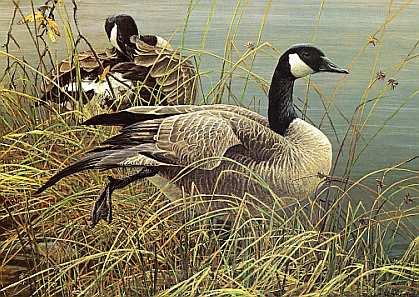|
|
Canku Ota |
|
|
(Many Paths) |
||
|
An Online Newsletter Celebrating Native America |
||
|
April 20, 2002 - Issue 59 |
||
|
|
||
|
'Tau ah Taiguey" |
||
|
The Arawak Greeting |
||
|
"Hello and Good Day!" |
||
|
|
||
|
April |
||
|
Month When the Geese Lay Eggs
|
||
|
Cheyenne |
||
|
|
||
|
"We can no longer live the way we used to. We cannot move around no more the way we were brought up. We have to learn a new way of life. Let us ask for schools to be built in our country so that our children can go to these schools and learn this new way of life." Chief Dull Knife |
||
|
|
||
|
We
Salute Iqaluit, Nunavut - A 90-year-old was saved by his 12-year-old hunting companion last week after the two were caught in a sudden blizzard. The elder Buster Kailek and Byron Alonak went caribou hunting on Friday afternoon and were found in a shelter four days later. They were supposed to return Sunday afternoon, but a blizzard set in and their snow machine hit a rock. The two were forced to walk through the biting wind and -40 C temperatures. They finally managed to get to the cabin where a rescue team found them. |
 |
|
The information here will
include items of interest for and about Native American schools. If
you have news to share, please let us know! I can be reached by emailing:
Vlockard@aol.com
|
|
|
|
Artist: In the month of January, 1849, a delegation of eleven Chippewas, from Lake Superior, presented themselves at Washington, who, amid other matters not well digested in their minds, asked the government for a retrocession of some portion of the lands which the nation had formerly ceded to the United States, at a treaty concluded at La Pointe, in Lake Superior, in 1842. ... ... But if there were doubts as to the authority or approval of the visit on the part of either the Chippewas or frontier officers of the government, these very doubts led the party, under the promptings of their leader, to resort to the native pictorial art, which furnishes the subject of this notice. |
A Night of Honour - A Night of Entertainment TORONTO - On Tuesday, April 16th at 8:00 pm on CBC Television, 14 outstanding Aboriginal heroes took centre stage to receive a National Aboriginal Achievement Award, the Aboriginal community's highest honour. "The message of these awards for young Aboriginal people - is they can go as far as they want in politics, science, business or the arts, if they set goals and stay focused," said John Kim Bell, the executive producer and founder of the awards. "And for Canada, the award recipients show that it is possible to be Aboriginal and to be successful in this country", said Bell. |
|

|
Indian
Law Center Fills Vital Niche When I talk to community groups, I usually tell them Minnesota, Montana, Michigan, North and South Dakota is Indian country. There are about 34 reservations in these states and they encompass millions of acres of land with resources like oil, gas, timber and minerals. They are the fastest growing groups of people on the Plains with a population of about 200,000 enrolled members. Seven years ago when I became involved with the development of the Northern Plains Indian Law Center at UND's School of Law, it became clear to me that law school was dead center and right in the middle Indian country ... a perfect place for this project. |
Indian Activist Tells Students to Wade into Social Issues Native American students need to think long term, work hard and have trust to improve themselves, their school and their region, Indian activist Billy Frank Jr. said Tuesday. "Nothing happens if you just sit around," Frank told Eastern Washington University students and guests during a speech for Indian Awareness Week. "You just don't go out the door and smell the roses ... you plant cedar trees. We'll never see them tall, but our children will." |
|
|
|
||


